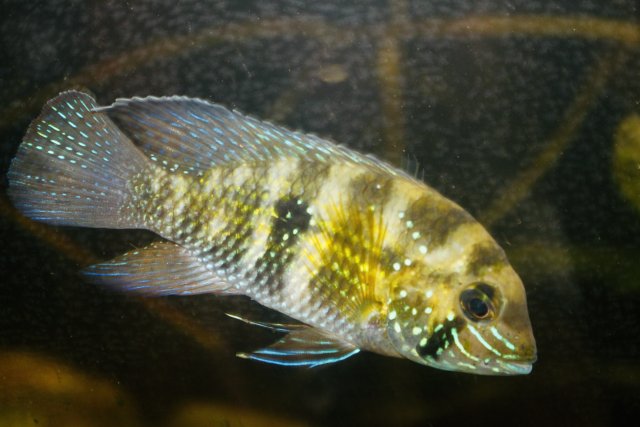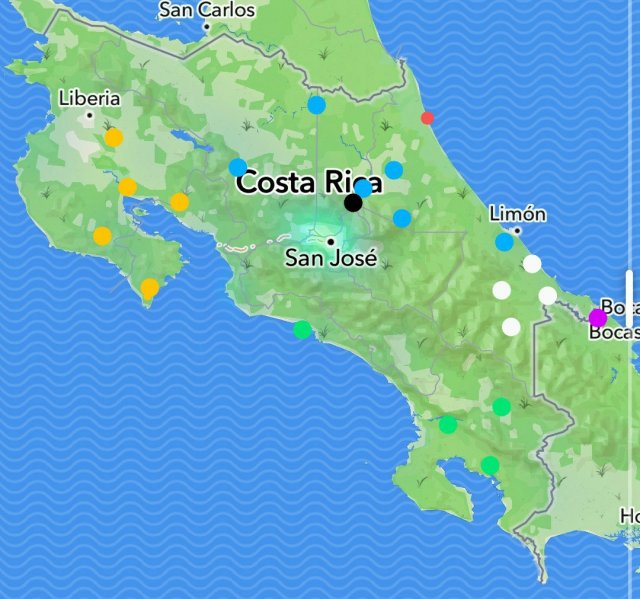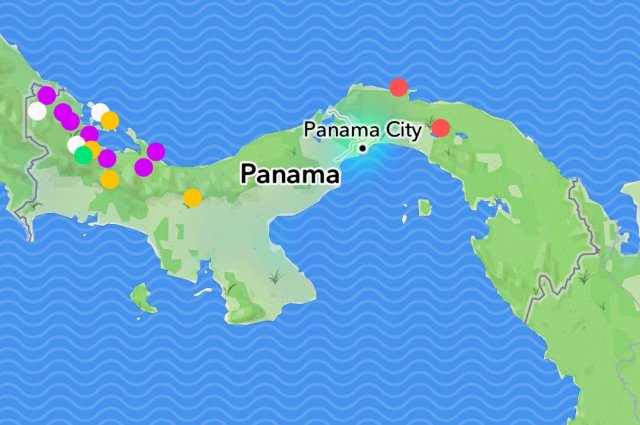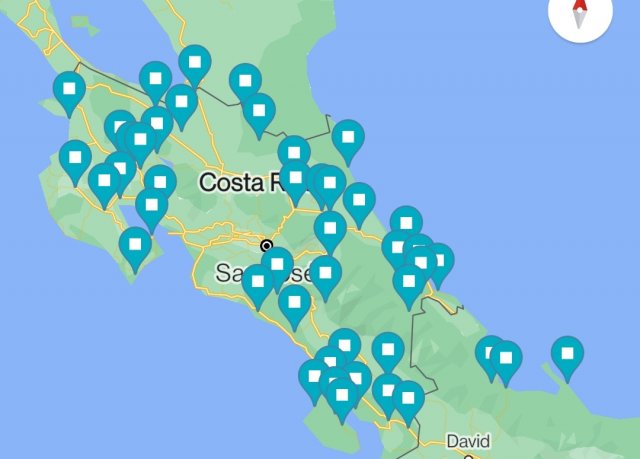Since both countries have a spine of mountains running thru the middle, its very typical for species and variants to be separated geographically, some rivers running only to the Caribbean, some running only to the Pacific.
Most cichlids inhabit low lands, so crossing the over mountains would not be their forte, even if there was a connection.
Here in Panama, there is an exception, because the Panama canal was intentionally cut thru the mountains allowing a mode of crossover in the Rio Chagres.
But....many rivers do not intersect, and are natural barriers in themselves.
As an example, Istmoheros tuyrense is only found near the Darien in the eastern part of Panama where tributaries that connect up with Lago Bayano and Rio Tuira This species is never found "naturally" in western western half of the county.
Only those species that arrived from S America millions of years before topography changed (the tectonics of mountains rising) are found everywhere.
Andinoacara coerleopunctatus, in both Costa Rica and Panama, and Geophagus crassilabris were able to migrate everywhere, both sides of the continental divide.
It will be interesting to see if over time, A coerleopunctatus variants, separated by geography like mountains evolve into separate species.
Just as most Andinoacara in S America live only west of the Andes, so A stalsbergi, and rivulatus would never naturally be found with, or even chance encounter fish from the east side of the Andes like Oscars, pike cichlids etc etc.
I have the Andinoacara variant found on the south western side of Panama, caught near San Martin.

An apparently different variant in the thread below
https://www.monsterfishkeepers.com/...cara-cf-corueleopunctatus-“rio-guale”.742510/.







